
We take a look at what happens next
Since the news of Queen Elizabeth II’s passing on Thursday 8 September, flags have been flown at half-mast; church bells have been rung, and famous landmarks across the world have been lit up with tributes.
The Brandenburg Gate in Berlin, the Empire State Building in New York, the Burj Khalifa in Dubai, the Christ the Redeemer statue in Rio de Janeiro and the Sydney Opera House are amongst the iconic national landmarks which have all featured images of the Queen or the Union Flag in recent days.
Elsewhere, the Eiffel Tower and the London Eye turned their lights off as a mark of respect.
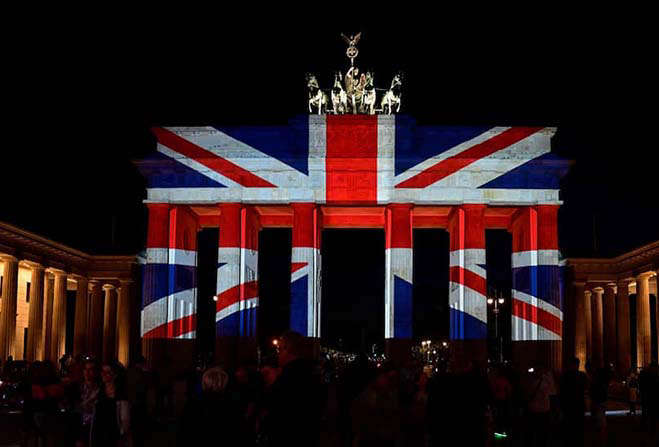
Brandenburg Gate, Berlin
Credit: AP
Now that the news has started to sink into the public consciousness, questions are inevitably being asked about what the future looks like, in both the short and long term.
The Royal Family has already announced the change of titles for several of its prominent members.
The former Prince of Wales, of course, is now His Majesty King Charles III.
His wife, the former Duchess of Cornwall, Camilla, is now Queen Consort – a move which was publicly backed by Queen Elizabeth II before her death.
Prince William has also seen his titles change, as he becomes the heir to the throne.
He is now the Duke of Cornwall and Cambridge, and the Prince of Wales, inheriting the title his father held since 1958.
His wife Kate is now the Duchess of Cornwall and Cambridge.
She has also become the first person since Diana, Princess of Wales to use the title, which Diana held when she was married to Charles.
Camilla was also technically the Princess of Wales when she married Charles in 2005, but never used the title because of its association with Diana, who died in a car crash in 1997.
William and Kate’s children are now Prince George, Princess Charlotte and Prince Louis of Wales.
There are also title changes for Harry and Meghan’s children.
The Duke and Duchess of Sussex’s son Archie Mountbatten-Windsor is now technically a prince due to rules set out by King George V in 1917.
When Archie was born he was too far down the line of succession for such a title according to George V’s restrictions, but now, as grandchild of a sovereign, he can be a prince, and his younger sister, Lilibet “Lili” Mountbatten-Windsor, is now technically a princess.
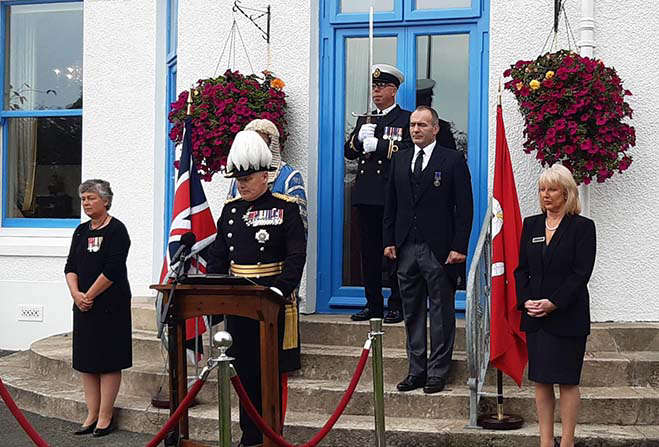
King Charles III's Proclamation at Government House, Isle of Man
A change in monarch has implications not just for the United Kingdom, but also the Commonwealth and Crown Dependencies.
Here in the Isle of Man, the king is also our Lord of Mann.
For tributes here in the Island, his Excellency the Lieutenant Governor opened a book of condolence at Government House in Onchan, which is available to the public from 9am-7pm Monday to Friday and 10am-5pm on Saturday and Sunday, and anyone wishing to pay their respects with a floral tribute is invited to place flowers on the green at Tynwald Hill in St John’s.
On Sunday, Sir John Lorimer proclaimed King Charles III as Lord of Mann in a ceremony at Government House.
A second proclamation ceremony will take place on Friday 16 September at 11am from Tynwald Hill in St Johns, the ancient seat of the Kings and Lords of Mann.
It will be based on the one held there in 1952 to proclaim Her Majesty Queen Elizabeth II and will be similar to the normal Tynwald Day ceremony.
After this, a resolution of loyalty and condolence will be put before a sitting of Tynwald Court in the Royal Chapel.
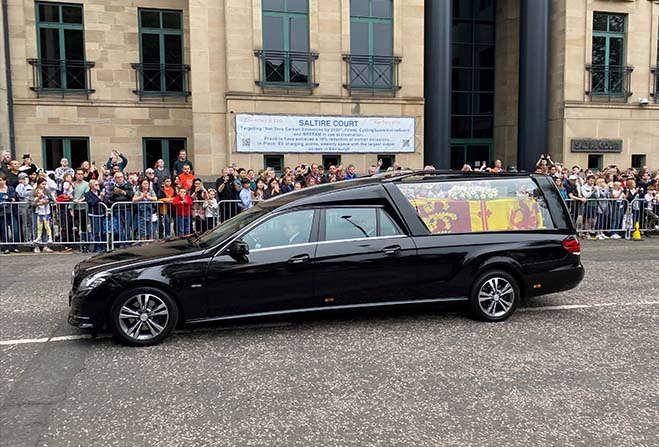
The Queen's hearse in Edinburgh
Credit: Frank Schuengel
The Queen’s coffin is currently making the long journey down from Balmoral to London, where it will lie in state in Westminster Hall ahead of her funeral on Monday 19 September.
The tradition of lying in state stretches back to the 17th century when Stuart sovereigns lay in state for a number of days.
Today (Monday), King Charles III, along with his siblings, accompanied the hearse from the Palace of Holyroodhouse up the Royal Mile to St Giles’ Cathedral in Edinburgh.
A service to celebrate Elizabeth’s life was held at 3pm. The Crown of Scotland was placed on her coffin for the occasion.
The crown is usually on display at Edinburgh Castle, and was remade in its current form for King James V of Scotland in 1540.
Members of the public will be able to view the coffin, which will lie at rest in the cathedral for 24 hours.
On Tuesday, it will be moved from St Giles' Cathedral to Edinburgh Airport, and then by plane to RAF Northolt.
The Princess Royal, Princess Anne, will accompany her.
On Wednesday (14 September), the Queen's coffin will travel from Buckingham Palace to Westminster Hall shortly after 2pm, where it will lie in state for four days.
Westminster Hall will open to the public at 5pm on Wednesday and will remain so for 24 hours a day until it closes at 6.30am on the day of the funeral.
Visitors will go through airport-style security before they are allowed access to silently view the closed coffin, which will be draped in a royal flag and likely another priceless crown.
Those wishing to attend are being warned of the hours-long queues to be expected.
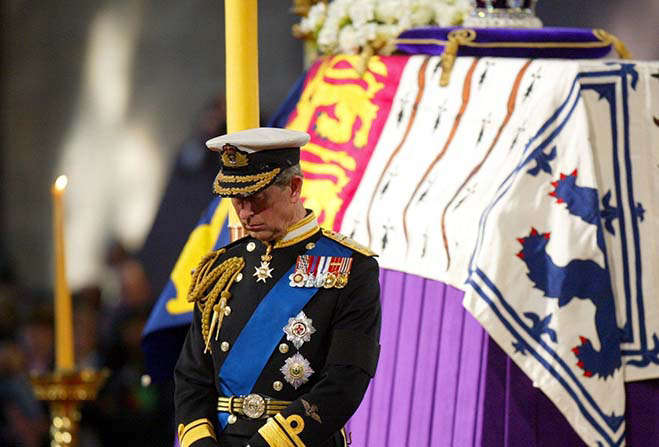
Prince Charles standing guard at the Vigil of the Princes for the Queen Mother in 2002
Credit: Sky News
The last person to lie in state in the UK was the Queen Mother in 2002.
It was the first lying in state where members of the public were subjected to a security check.
At their longest, queues stretched across Lambeth Bridge and all the way along the South Bank to Southwark Cathedral, with people being warned to expect a wait of up to 12 hours at peak times.
It is likely that the Queen’s children or even grandchildren will honour her with a vigil and join the guard over the coffin at some point – a tradition which has been called the Vigil of the Princes.
Should the Princess Royal stand guard for the Queen, she will be the first female member of the Royal Family to do so.
Prince Philip did not lie in state following his passing in 2021 at his own request.
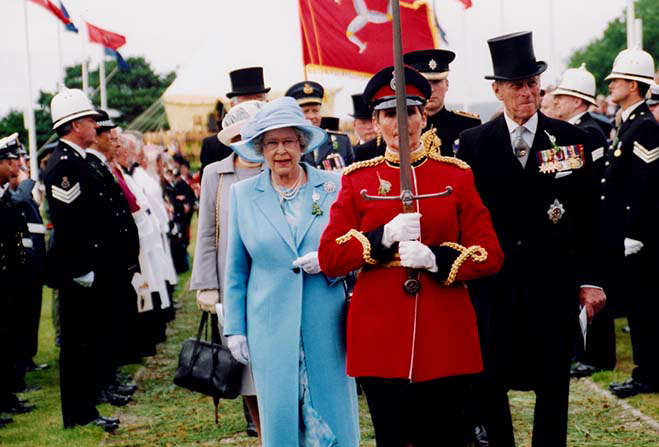
The Queen at Tynwald Day proceedings in 2003
A minute’s silence will be held at 8pm on Sunday (18 September) to pay tribute to Queen Elizabeth II.
Downing Street announced the “shared moment of reflection” earlier today, and a spokesperson for the Isle of Man government has confirmed we will follow suit here.
The minute’s silence will be held the night before a 10 day period of national mourning ends with the state funeral.
Looking ahead to the funeral, on Monday 19 September, the Queen's lying in state will end, and the coffin will be taken in procession to Westminster Abbey for the state funeral.
The day will be a bank holiday here in the Isle of Man, with schools and government offices due to close. Essential public services will continue to operate.
Among the guests at the funeral will be members of her family, senior UK politicians and heads of state from across the world.
Representatives from charities she supported will also be present.
The service will be broadcast into homes around the world.
It will mark the end of an incredible life of dedication and service.
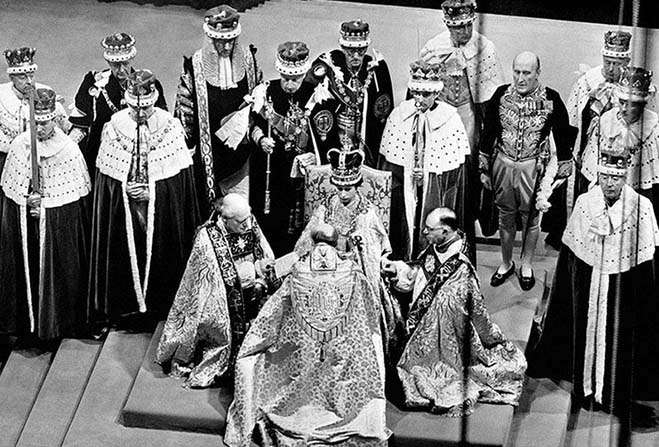
The Queen's Coronation, 1952
Elizabeth had a reign marked by extraordinary broadcasts.
Her coronation back in 1953 was the first to be televised in full, and the first major world event to be broadcast internationally.
Millions across Britain watched the coronation live on the BBC, and many purchased or rented television sets for the event.
She has been present on our screens for Royal weddings; Olympic ceremonies, Jubilee celebrations and every Christmas day for decades. Through times of strife, special broadcasts placed her front and centre, offering words of strength to the nation.
Next week, another broadcast, which will surely be watched by millions more, will see her laid to rest.
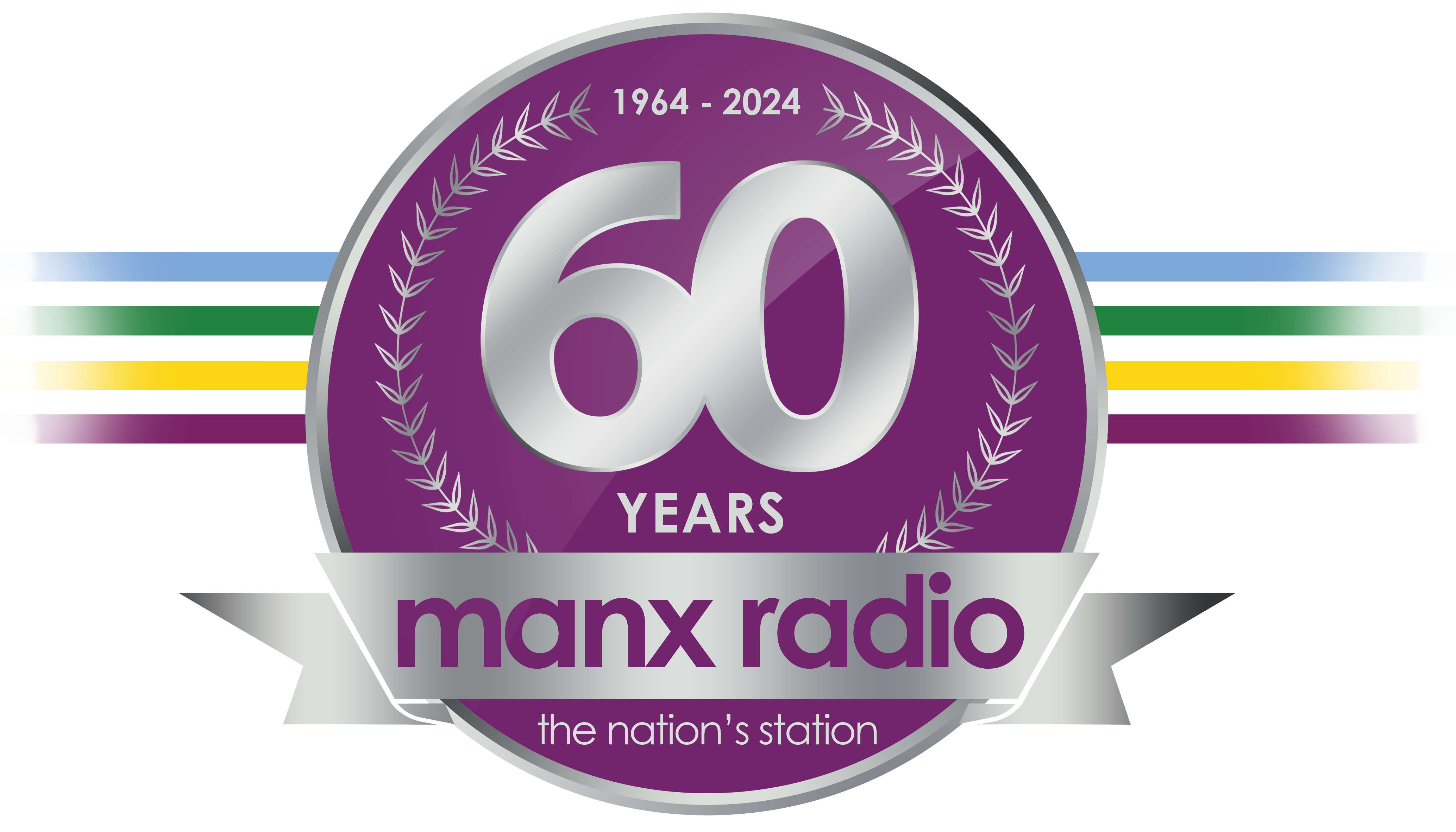

 Disruption at Ronaldsway airport following incident with light aircraft
Disruption at Ronaldsway airport following incident with light aircraft
 Hopes for better working relationship between government and hospitality sector
Hopes for better working relationship between government and hospitality sector
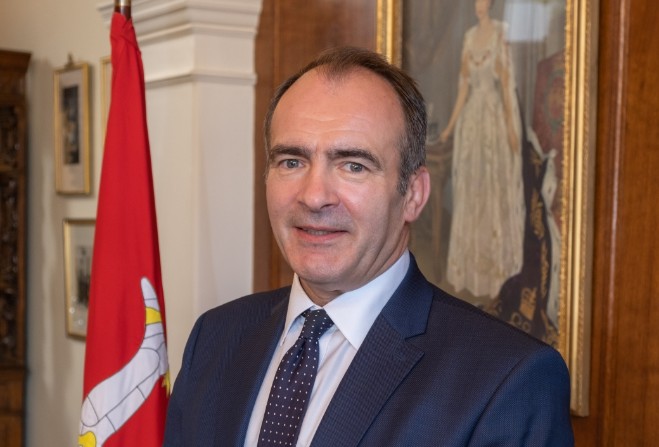 'A lot of work to do' on low income housing
'A lot of work to do' on low income housing
 Public servants killed in the line of duty eligible for new award
Public servants killed in the line of duty eligible for new award
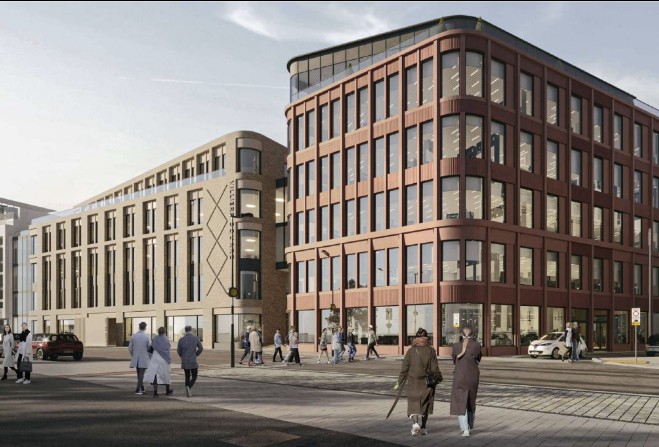 Multi-million pound Villiers development recommended for approval
Multi-million pound Villiers development recommended for approval
 Rosalind Ranson row draws to a close
Rosalind Ranson row draws to a close
